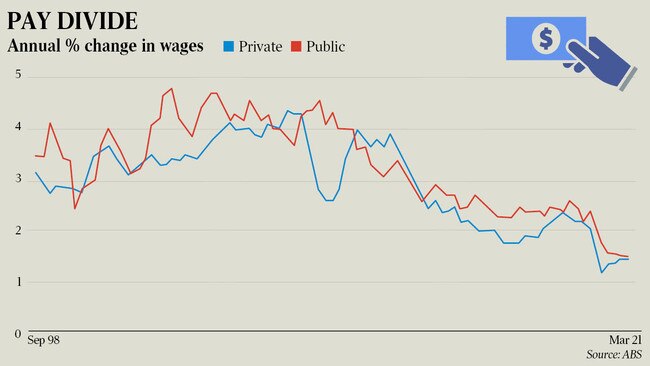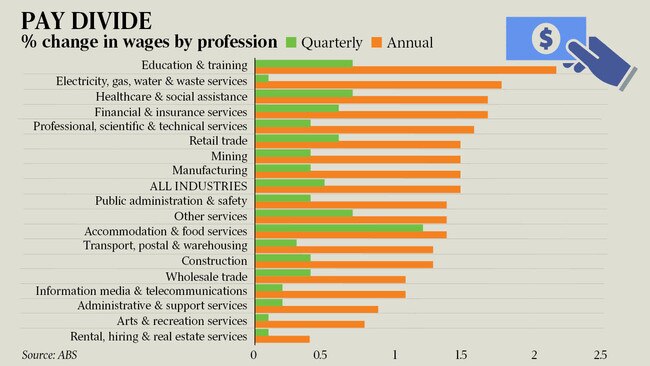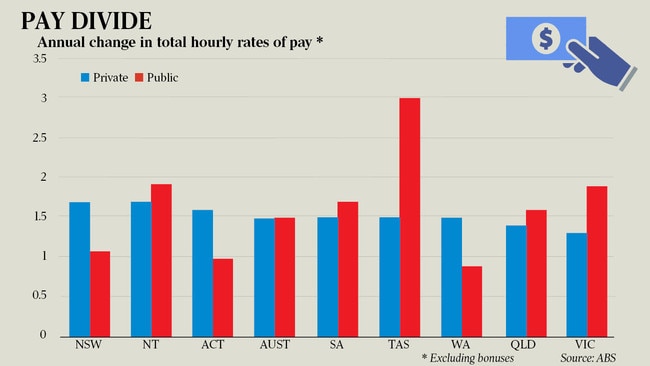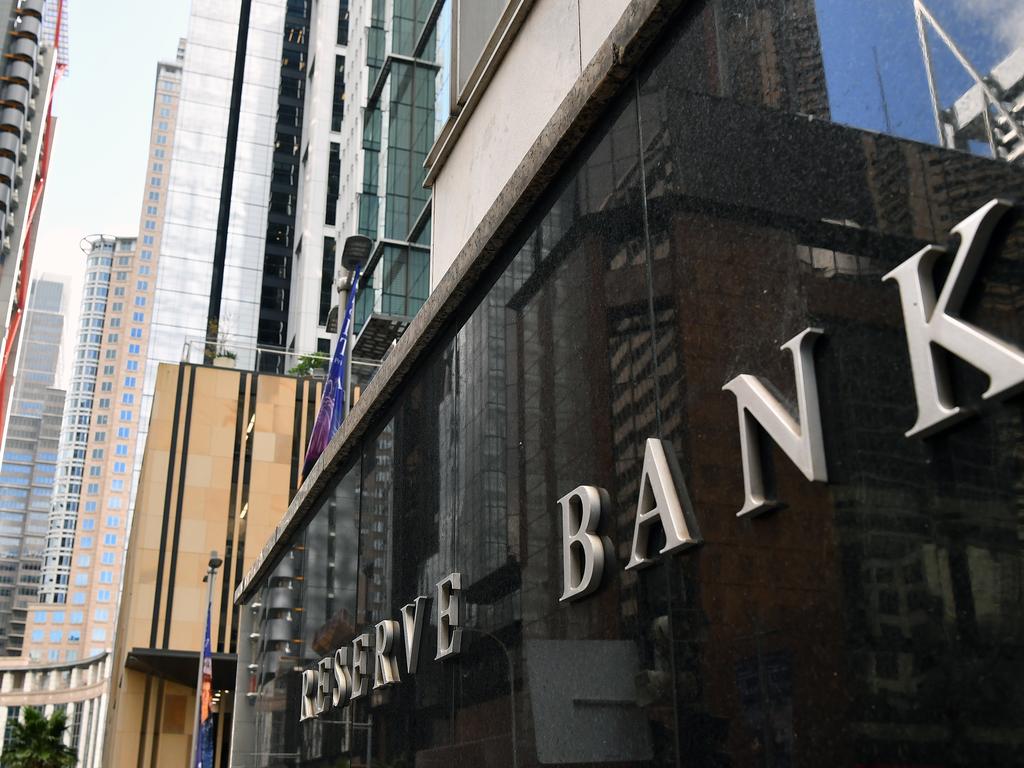Call to limit low-paid wage rises
The Morrison government has warned against significant minimum wage increases for 2.2 million workers, angering the ACTU.

The Morrison government has warned against significant minimum wage increases being granted to 2.2 million low-paid workers, sparking a fresh ACTU attack on the Coalition as new figures showed annual wages growth stagnating near a record low.
The fastest-paced labour market recovery in Australian history — 945,000 jobs have been added since the depths of the pandemic last May — helped boost business conditions but failed to ignite wages growth, which inched higher to 1.5 per cent over the year to March.
The continuing gloomy news for workers came as the government told the Fair Work Commission expert panel that, although the economic recovery was “well underway and the outlook was positive, the COVID-19 virus continues to present an ongoing threat to the global and domestic economy”.
Alison Durbin, first assistant secretary of the employment conditions division in the Attorney-General’s Department told the commission on Wednesday: “Given the economic uncertainty, the government maintains that the expert panel should adopt a cautious approach.”
Ms Durbin said the commission should take into account the importance of creating employment and supporting the viability of businesses, particularly small businesses.
She said literature on the impact of wage changes on employment generally pointed to the need for caution, noting that OECD data showed that in 2019 Australia had the highest hourly minimum wage in purchasing power parity terms.
Ms Durbin said research also primarily indicated the potential impact on employment of minimum wage increases was most likely to be felt by vulnerable cohorts such as youth and those with low skills. The risks to employment could be more pronounced when there was spare capacity in the labour market.
Responding to the commonwealth submission, ACTU secretary Sally McManus said the government “can’t have it both ways: on one hand trumpet an economic recovery and on the other hand act to keep wage increases at low levels”.

“They are pretending there is little they can do about low wage increases,” Ms McManus told The Australian. “Yet they have a huge lever at their disposal. The annual wage review directly determines wage increases for around 25 per cent of the workforce. The federal government should be arguing alongside unions for wage increases. If they did so it would make a huge difference.
“Perhaps they are more concerned with upsetting their friends in big business like Gerry Harvey who are putting their energies into arguing for pay cuts and wage freezes”.
According to the federal budget, annual wages growth will remain below or equal to the forecast inflation rate until 2024, delivering real wage cuts to workers for another 14 months after years of stagnating pay packets.
The ACTU is pushing for a 3.5 per cent minimum wage increase, equivalent to $26.38 a week, from July. The Australian Industry Group and the Australian Chamber of Commerce and Industry want any rise limited to $8.29 a week, or 1.1 per cent, with a staggered implementation date depending on the industry.
During the Wednesday hearing, commission president Iain Ross, who will hand down the minimum wage decision in weeks, asked Treasury to produce a paper on employment losses associated with the end of JobKeeper.

The ABS said last year’s deferred increase in the minimum wage for some of the most heavily COVID-affected sectors kicked in for about one in three employees on the award, accounting for close to a fifth of the 0.1 percentage point increase in the index over the quarter.
Economists said the subdued wage result would not shift the dial for the Reserve Bank, which remains committed to waiting until pay is increasing by at least 3 per cent before moving on rates. The RBA predicts wages growth will only be running at 2.25 per cent by the middle of 2023.
JP Morgan economist Tom Kennedy said: “Today’s (wages report) does not change the narrative that a sustained return of inflation to the target band is still a distant prospect.”
ANU professor of economics Warwick McKibbin said the government could have done more in the budget to lift wages. “The key for the government lifting wages is productivity growth,” said Mr McKibbin, who served a decade on the Reserve Bank board.
“The budget could have done more to pursue economic reform in taxation and the move towards a low carbon economy.”
Opposition Treasury spokesman Jim Chalmers renewed his attack on the government’s record on worker pay on Wednesday, saying the $96bn in stimulus announced in last week’s budget had done nothing to shift an official outlook that had real wages stagnant over the coming years.

Dr Chalmers targeted pay in the aged care sector as a key part of the country’s overall problem with low wages.
“One of the reasons why we have stagnant wages growth in this country is because some of our biggest female-dominated workforces have had such horrible wage outcomes,” Dr Chalmers said. “There’s a role for (the Fair Work Commission) in acting on that front.”
He echoed comments by RBA governor Philip Lowe that the commonwealth, as a major employer, had a role to play in helping lift national wage growth.
Private sector pay climbed by 1.4 per cent. Growth in annual pay ranged from 0.4 per cent in the rental, hiring and real estate services industry to 2.2 per cent for the education and training industry.
Government pay over the year to March increased by 1.5 per cent — the slowest on record — with the ACT reporting the weakest overall wage growth in the country, at 1.3 per cent.
“Public sector wage growth has been converging from above to the weaker, private sector trend,” Mr Kennedy said.
In hospitality, where the number of job vacancies is the highest and there are reports of severe labour shortages, wages climbed by well above the national average, at 0.9 per cent over the first three months of the year.
Additional reporting: Richard Ferguson







To join the conversation, please log in. Don't have an account? Register
Join the conversation, you are commenting as Logout